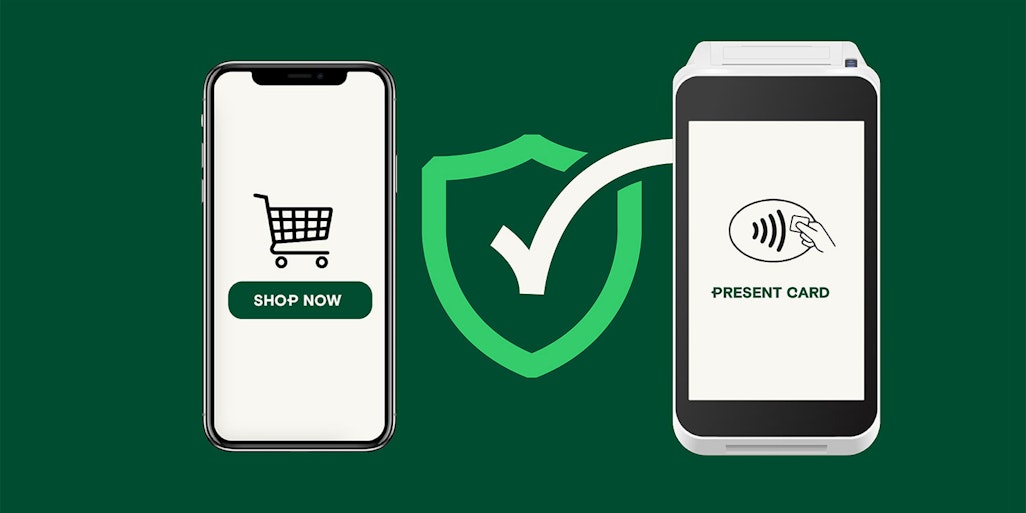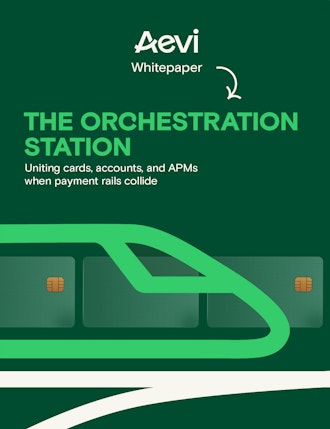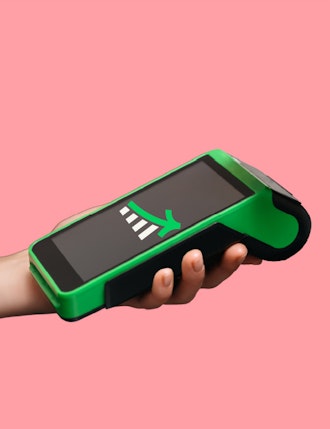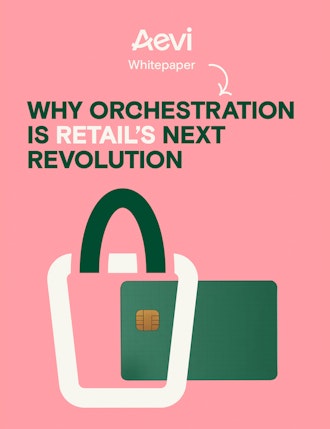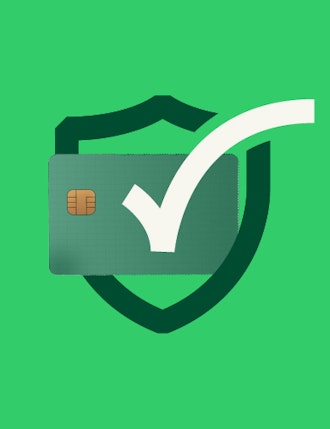Key Insights
-
The most important thing to understand about near field communication (NFC) mobile payments is that they allow phones, wearables, or NFC cards to make secure, tap-to-pay purchases in seconds.
-
One of the lesser-known advantages is that NFC payments use tokenization and mobile payment encryption so real card numbers are never shared, making stolen data useless.
-
What many businesses overlook is that NFC adoption isn’t just about hardware, it also depends on training staff, reassuring customers about security issues in mobile payment systems, and maintaining PCI DSS compliance.
-
The key trend to watch is how platforms like Aevi unify in-store NFC payments with other digital payment rails, giving merchants a single, secure orchestration layer for future-ready commerce.
Don't have time to read more now? Sign up to our newsletter to get the latest insights directly in your inbox.
You’ve probably noticed more people tapping their phones or watches at the checkout instead of reaching for a card…
…That’s NFC mobile payments in action. They’re quick, they’re convenient, and, despite common worries, they’re also one of the most secure ways to move money in person.
For payment enablers, the real opportunity lies in what makes NFC work: tokenization, encryption, and strict proximity rules. These protections safeguard consumers while giving merchants faster checkouts and more reliable data. Here, we’ll unpack how NFC mobile payments operate, why the security holds up, and what it all means for both merchants and their customers.
What are NFC mobile payments?
NFC mobile payments are contactless transactions that use Near Field Communication to transfer payment information securely between a device and a payment terminal. In practice, this means a shopper simply taps their smartphone, smartwatch, or NFC-enabled card within a few centimeters of a reader.
The most important thing to know is that your actual card number is never transmitted. Instead, a one-time token and encrypted data are exchanged, (aka: tokenization), so even if information were intercepted, it couldn’t be reused. All NFC mobile payments also rely on built-in secure elements and tokenization, which means payment data is never exposed.
In short: NFC makes checkout faster, simpler, and more secure.
How NFC mobile payments work
- The tech - NFC works over a range of about 4 cm. This short distance is by design, reducing the risk of interception. Phones and wearables come with NFC chips built-in, and most modern payment terminals support the standard. The payment details themselves are protected inside the device, either in a secure chip or through the cloud, so they can’t be accessed or copied.
- The process - To pay, customers unlock their device (often with Face ID, fingerprint, or passcode, aka: biometrics) and hold it near the reader. The terminal receives a tokenized card number and a one-time cryptogram, which the issuer bank validates in real-time.
- The payment people - Consumers, merchants, payment processors, issuing banks, and digital wallet providers (like Apple Pay or Google Wallet) all interact. The wallet manages tokenization; the processor routes the data; the issuer approves.
- The experience - The customer gets a faster checkout and doesn’t need to carry a physical card. Merchants reduce cash handling, speed up lines, and gain a more hygienic, contact-free flow.
Why NFC payments need to be secure
A commonly asked question is how are contactless payments secure? The answer lies in layered protection - every NFC transaction includes encryption, tokenization, and authentication. Let’s explore them in more detail…
Tokenization
Instead of transmitting the actual card number (PAN), the wallet uses a device-specific token. That token, combined with a one-time EMV cryptogram, makes the data useless if stolen. This is one of the strongest defenses against security issues in mobile payment systems.
Authentication
Most NFC wallets require biometric or passcode authentication before payment. The secure element or hardware enclave in the device keeps credentials locked away from the operating system, protecting against malware.
Proximity
Because NFC requires close contact, accidental or remote payments are highly unlikely. Each transaction is validated in seconds, and replay attacks don’t work since codes are unique and expire instantly.
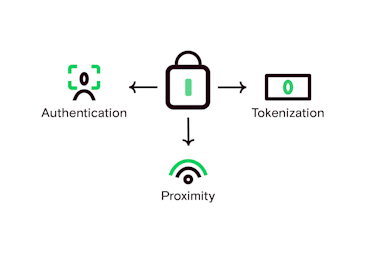
The business impact of NFC mobile payments
Security is the foundation; the impact shows up at the checkout. When taps complete in seconds and card data stays tokenized, you get smoother lines, fewer manual steps, and cleaner data. Here’s what that means in practice, and what to watch as you roll it out…
- For consumers: A quick tap replaces card swipes and cash handling. Wallets can store loyalty, tickets, and offers, so redemption happens in the same motion as payment.
- For your merchants: Faster-moving queues and more customers served during peak hours, fewer chargebacks thanks to EMV compliance, and clearer insights from digital receipts and consistent transaction data. Rollout does depend on NFC-ready terminals, but most modern estates already support it.
- For enablers: One platform can orchestrate NFC devices, wallets, routing, and reporting, making updates, monitoring, and analytics consistent across estates. It also helps maintain compliance with PCI and regional security requirements.
What many teams overlook: NFC isn’t only a payment trigger. Loyalty redemption, ticket validation, and promos can ride along with the tap, lifting conversion without extra steps at POS.That makes NFC a flexible engagement channel, not just a way to pay.
Are there any drawbacks to NFC?
Despite its strengths, NFC still faces barriers:
- Adoption hurdles: Some merchants delay upgrades due to terminal costs or limited training. A brief enablement plan (positioning the device, retry flow, explaining security to customers) fixes most day‑one friction.
- Infrastructure gaps: Legacy POS may need firmware or antenna upgrades for reliable contactless. Standardize on NFC/EMV‑ready hardware and keep firmware current via remote device management.
- Security perceptions: A minority of customers still worry about contactless. Visible cues help: biometric prompts on‑device, contactless marks at checkout, and PCI/P2PE badges on terminals. Equip staff with a simple explanation: “Your real card number isn’t shared - each tap uses a one‑time encrypted token."
- Regional preferences: In some markets, QR codes or local wallets compete directly with NFC, meaning adoption isn’t uniform worldwide. Offering the right mix of payment methods reduces friction at checkout.
- Operational realities: Even with strong adoption, devices aren’t foolproof. Low phone batteries or patchy connectivity can cause failures, which is why fallback options - from chip-and-PIN to alternative wallets - still matter.
The most important thing to understand: a small investment in training, signage, and device management turns these hurdles into quick wins - fewer failed taps, faster lanes, and higher confidence at the point of sale.
Implementing NFC for your merchants
If you’re helping merchants embrace NFC, success depends on execution. A helpful way to look at this is in 4 stages…
- Choose NFC-ready hardware
- Train staff
- Promote tap-to-pay
- Maintain security
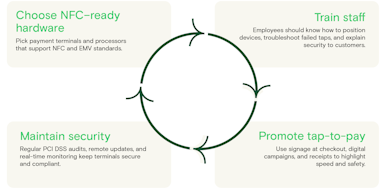
What’s the future of NFC payments?
The key trend to watch is how NFC will integrate with broader digital ecosystems. From digital IDs to IoT devices and even crypto wallets, the same tap-to-pay motion could soon power identity checks, subscriptions, and cross-border payments.
Our very own Sarah Koch, Director of Marketing and Communications at Aevi, shares her thoughts on where this is heading:
"We see NFC evolving far beyond simple payments. The tap that buys a coffee today could tomorrow verify age, unlock a subscription, or connect to a loyalty profile. For enablers, the real shift is moving toward orchestration-first platforms. With Aevi, NFC isn’t bolted on, it’s part of a unified system that connects any merchant, any device, any market. That means secure tokenization, biometrics, and AI-driven fraud checks are built into every tap, while online and in-store flows run seamlessly on the same rails. To put it poetically, the future isn’t only contactless, it’s orchestrated."
Ready to help your merchants adopt NFC easily with a payment orchestration platform that already has it built in? Let’s talk.

